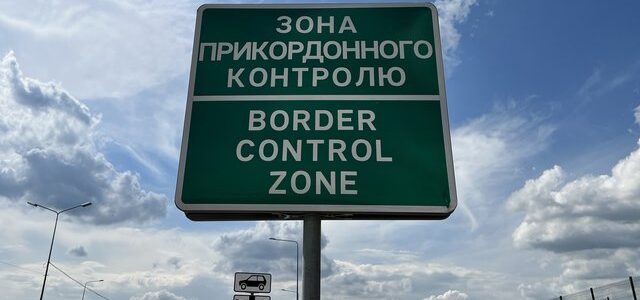
Passenger traffic across Ukraine’s border from August 16 to 22 amounted to 768,000, which is 1.3% less than the record level for wartime in the previous two weeks, according to data from the State Border Service on Facebook.
According to the data, while in the previous four weeks the number of people entering the country exceeded the number of people leaving by 15,000-32,000, with the approach of the new school year, the numbers evened out: the number of people leaving increased from 378,000 to 385,000, while the number of people entering decreased from 400,000 to 383,000.
The number of vehicles that passed through checkpoints this week increased from 144,000 to 145,000, while the flow of vehicles carrying humanitarian cargo decreased from 524 to 449.
This Sunday, as of 9:00 a.m., according to the State Border Service, the longest queue of 55 cars and 4 buses was at the Ustyluh checkpoint on the border with Poland. Forty cars and four buses were waiting to cross the border at the Krakivets checkpoint, while 19 buses had accumulated at the Shehyni checkpoint.
On the border with Hungary, the longest queue of 45 cars was at the Kosyno crossing, while at the Luzhanka checkpoint there were 30 cars, at Dzvinkove – 20, and at Tisa – 15.
At the border with Slovakia, 30 and 20 cars were waiting for inspection at the Uzhhorod and Malyi Berezny checkpoints, respectively, while at the border with Romania, there was only a queue of 30 cars at the Dyakove checkpoint.
The total number of people crossing the border this year is 4.2% higher than last year: during the same seven days last year, 370,000 people left Ukraine and 367,000 entered, and the flow of cars was also lower – 133,000.
As reported, from May 10, 2022, the outflow of refugees from Ukraine, which began with the start of the war, was replaced by an influx that lasted until September 23, 2022, and amounted to 409,000 people. However, since the end of September, possibly influenced by news of mobilization in Russia and “pseudo-referendums” in the occupied territories, followed by massive shelling of energy infrastructure, the number of those leaving exceeded the number of those entering. In total, from the end of September 2022 to the first anniversary of the full-scale war, it reached 223,000 people.
During the second year of the full-scale war, the number of border crossings to leave Ukraine, according to the State Border Service, exceeded the number of crossings to enter by 25,000, during the third year by 187,000, and since the beginning of the fourth year by 116,000, of which 80,000 were seasonal since the beginning of summer.
As Deputy Minister of Economy Serhiy Sobolev noted in early March 2023, the return of every 100,000 Ukrainians home results in a 0.5% increase in GDP.
In its July inflation report, the National Bank of Ukraine worsened its migration forecast: while in April it expected a net inflow of 0.2 million people to Ukraine in 2026, it now forecasts a net outflow of 0.2 million, which corresponds to this year’s estimate of net outflow. “Net returns will only begin in 2027 (about 0.1 million people, compared to 0.5 million in the previous forecast),” the NBU added. In absolute terms, the National Bank estimates the number of migrants currently remaining abroad at about 5.8 million.
According to updated UNHCR data, the number of Ukrainian refugees in Europe as of July 31, 2025, was estimated at 5.115 million (as of July 1 – 5.083 million), and worldwide – at 5.676 million (5.643 million).
In Ukraine itself, according to the latest UN data for April this year, there are 3.757 million internally displaced persons (IDPs), compared to 3.669 million at the end of last year.